Chandima Bandara Ambanwala
Department of Archaeology & Heritage Management, Rajarata University of  Sri Lanka, Mihintale.
Translated by. Chryshane Mendis
Introduction: Prehistoric Research in Sri Lanka
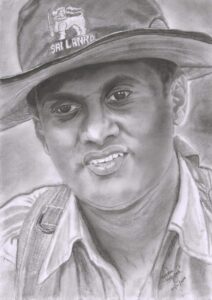
It is a known fact that different approaches need to be applied in examining a certain subject, therefore in studying a certain subject, there can be many different methods used. One successful method is by studying the contributors of that subject or the scholars that contributed to that specific field. Accordingly from here on this article series would focus on the founders of prehistoric archaeology in Sri Lanka and the best way to appreciate them is by describing their contribution to the field. Also, it is important to be aware of the hardships faced by archaeologists and other researchers in creating the knowledge we have today. Dr. Siran Deraniyagala in his doctoral thesis at the Harvard University in the USA titled “Prehistory of Sri Lanka: an ecological perspectiveâ€, the section on History of Research (pages 2-22) contains an interesting stream of information and analysis and deserves an honorable mention here.
Even though knowledge of the Man of the pre-Vijayan era or the Prehistoric man is limited in the present generations, studies into to prehistory dates back to more than 125 years ago. The interest to study the Stone Age Man dates back before the Archaeological Survey of Ceylon was started in 1890 under Harry Charles Purvis Bell. It can be seen that the interest created in the prehistory of Europe in the 19th century spread directly to Sri Lanka. Excited by the theory of evolution by Charles Darwin, European scholars began to search the origins of Man moving away from the religious belief that Man was created. Though this enthusiasm was centered in Europe, the Europeans living in the island too took an interest in the Stone Age Man in Sri Lanka. The ways in which Sri Lanka’s prehistory was studied and its features, when examined shows important characteristics at different periods. Accordingly from the first study in 1885 to the present can be divided into 3 periods. They are, 1. the period from 1885 to 1939, 2. the period from 1939 to 1969 and 3. from 1969 to the present. Let us examine these different periods in brief.
The beginning
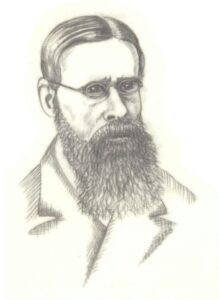
The beginning of prehistoric archaeological research in India could be stated as begun from 1863 after the discovery of a Palaeolithic tool from a rock crater in the Pallawaram area of Madurai by Robert Bruce Foote of the Geological Survey of India. The writer believes that prehistoric archaeology should be studied as a unique subject or a regional phenomenon not bound by administrative boundaries (like India, Sri Lanka, Eastern Province, Western Province or cultural boundaries). Therefore the above incident could be taken as the beginning of prehistoric archaeology in Sri Lanka as well. Similarly, prehistoric research began in the island in about 1885. The founders of prehistoric research in the island were not archaeologists but scholars and professionals from different fields (archaeology had not been developed as a discipline during this time). The initial work of the early researchers was collecting of stone tools made out of Quartz and Chert found on the surface in different parts of the island. Through these findings, they provided evidence that prehistoric people using stone tools had existed in the island. In collecting and defining these tools, these researchers were spontaneous in interpreting these findings with findings in Europe.
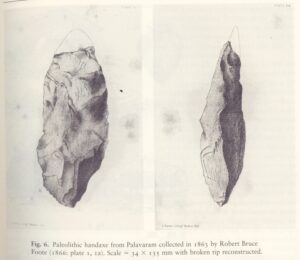
The Entomologist E. E. Green in 1885 discovered from sites in the central hills such as Peradeniya, Nawalapitiya and Pudalu Oya stone tools of Quartz and Chert, this is one of the oldest recorded prehistoric explorations done in the island. Afterwards the cultivator John Pole discovered many more tools in places such as Maskeliya, Dimbula, Dikoya, Bogawanthalawa, Mathale, Nuwara Eliya, Madolseema, Galle, and Maankulam. In 1913 he published a detailed report on his findings. In his report, he has identified the Chert tools as belonging to the Palaeolithic period and the Quartz tools to the Neolithic period.
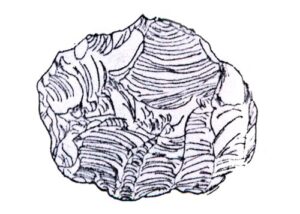
Soon after the famous Swiss anthropologist brothers P. Sarasin and F. Sarasin began their studies in the island. The knowledge gained from their research in the Celebes islands was a useful factor in commencing research here in Sri Lanka. With that knowledge, they showed that all the stone tools found throughout the island were human creations as was the view of certain western scholars that the tools were the work on nature and not man. Firstly the Sarasin brothers examined the Thelula and Galge caves of the Southern Province and found evidence of animal remains and Quartz tools. After that, they examined locations in Buthala and Okkampitiya but found no evidence.
After that, they focused their attention on the areas of the Vaddas in Bibile and Nilgala who are thought to be some of the oldest inhabitants of the island. In the meantime, they also excavated the Gangodadeniya cave which showed some results, but the special feature of this excavation was their attention to the soil layer found there. During their systematic excavation of the cave, they were able to discover a human skeleton. After this once again their excavations of Matigaha-ara cave and Gongigane cave in Akiriyankumbura showed no promising results. From here they next focused their attention to the central hills of Sri Lanka. They found stone tools on the surface in areas in Kandy and Bandarawela and also collected stone tools from the areas of Gampola, and Nawalapitiya. It is mentioned that these stone tools are now in the Basel Museum in Switzerland. The artefacts found by the Sarasin brothers and John Pole has been reexamined. Their findings from Sri Lanka were put into the report in 1909 and at a time when Prehistory was not that developed in the world; the publishing of a successful report was an important phenomenon. Through this report when comparing the tools found in Sri Lanka and those found in Western Europe, puts them to the Upper Paleolithic period and belonging to the Magdalenian culture of Europe. Based on these the research of the Sarasin brothers is very important to the study of Prehistory.
The Government’s Mineral Resource Researcher Parsons too had investigated the prehistoric era of Sri Lanka. He had excavated the Beligalge cave in the Dikmukalana tea estate of Bambarabotuwa. During the excavations, he had found human skeletal remains about 8 feet deep. Later Charles Hartley examined the soil excavated by Parsons more closely.
B. Gardner had collected stone tools from the area of Belihul Oya to the east of the Beligalge cave and conducted researches in different parts of the island. Later Lewis too carried out several researches island wide with the Urumuththa cave in the Matara District being the most prominent.
The Irrigation Engineer Henry Parker contributed a great deal to the study of prehistory by conducting several ethnological researches on the Vadda and Sinhala people. He tried to produce a logical view on the folklore of the Sinhala, Tamil and Vedda people of the island. On studying the origins of the Vadda, Â he proposed the idea that they are the descendants of the Yaksha people mentioned in the Pali chronicles. Through his book Ancient Ceylon: an account of the aborigines and of part of the early civilisation, Asian Education Services, New Delhi (1909) he showed his knowledge on the many fields he looked into. He was the first to categories stone tools in Sri Lanka through the systematic excavation of soil layers of caves of Bendiyagalge in Henebaddha and Mullegama Galge.
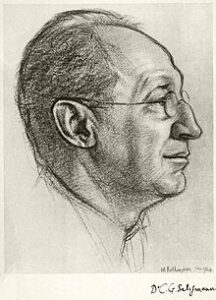
The anthropologist couple Charles Gabriel Seligman and Brenda Zara Seligman who have conducted some of the best anthropological research of modern times have greatly influenced modern prehistoric archaeological research. Out of the many researches conducted by them, the research on the Vaddas of Sri Lanka The Vaddas – Cambridge University Press is an important work. Through their excavations of the Bendiyagalge cave in Henebaddha they pointed out the historical periods of the cave through the analysis of the soil layers. C. G. Seligman was the first to propose the categorization of the stone tools by Quantity. The Seligman couple too had collected stone tools from the Bandarawela area just as the Sarasin brothers. They had rejected the idea that the stone implements found from this area belonged to the Palaeolithic period as suggested by the Sarasin brothers and instead stated that they belong to the Neolithic period. The stone implements excavated by them are said to be at the Pitt Rivers Museum in Oxford.
Charles Hartley who contributed a lot to Sri Lankan prehistory continued to excavate the Beligalge cave begun by Parsons earlier but could not reach the bed rock due to several large rocks which they encountered while excavating. Hartley had carried out his research in Bandarawela, Diyathalawa, Haputhale, Pattipola, Nanuoya, Koslanda, Ragala, Norwood, Dickwella, Radella, Dimbula, Koggala, Hatton, Maskeliya, Bagawanthalawa, Ulapane, Nawalapitiya, Gampola, Dolosbage, Peradeniya, Kadugannawa, Kandy, Puttalam, Habarana, Kurunegala, Polonnaruwa, Hambanthota, Beligalge and many other places in the island. It is shown that most of the stone implements excavated by Hartley were sent to the Archaeology and Anthropology Museum of Cambridge University and the Pitt Rivers Museum of Oxford University. Through his excavations, thousands of stone implements were found.
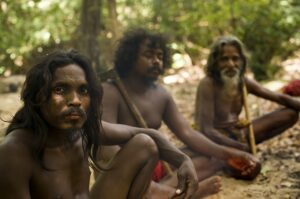
Hartley was able to broaden the foundations laid by the Sarasin brothers and all the stone tools found up to that date were found to be similar to the Neolithic tools. The tiny stone tools found were called as Pigmy in 1913 and now known as Microlithic stone tools. Microlithic tools are found in locations such as Matale, Diyathalawa, Pattipola and Maha Eliya (Horton Plains) of the Wet zone or Environmental zone D and the coastal regions of Jaffna.
He was able to collect lunate shaped geometrical stone tools and also presented a categorization of the stone tools. But sadly Hartley never produced a satisfactory report on his numerous excavations.
The geologist E. J. Weyland could be identified as one of the most important characters in the early period of prehistoric archaeological exploration who took a different approach to it. He served as the Government’s Assistant Mineral Resource Researcher. Kalum Manamendra-archchi has pointed out that the greatest prehistoric archaeologist of the modern times Dr. Siran Deraniyagala has taken influence from E. J. Weyland. He has paid special attention to the impact of geological conditions and climatic conditions to the prehistory of the island. He had conducted studies in the North West in the Kala Oya and Modaragamaru plateau deposits and also in the South East from the semi-arid region of Udapothana up to Mulathivu. He has shown that the deep gravel layer found in these areas belong to the Pleistocene glacial period and the surface red sand belonged to a dry climatic condition. The red soil deposit now known as the Iranamadu Sequence by geologists and the Iranamadu Formation (IFm) by archaeologists was first studied from an archaeological point of view by Weyland. During the 1970s and 1980s, this deposit was future scientifically studied by Dr. Siran Deraniyagala. Out of the many publications by Weyland, the article “Outline of the Stone Ages of Ceylon†in the Spolia Zeylanica is a famous work. In this work, he had categorised the stone tools as the Hill series and Lowland series. The stone implements found from the Bandarawela area by researchers such as Charles Hartley were found small in size and they were classified as belonging to a period between Paleolithic and Neolithic periods and also plateau deposits inclusive lowland grades tools were large in size and made a comparison to them with the Middle Paleolithic or Mousterian period in Europe.
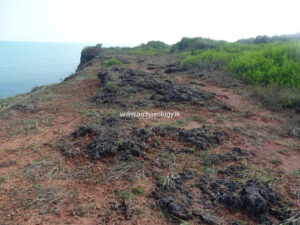
Johnn Still and A. M. Horcart too have contributed to the development of prehistoric archaeology in Sri Lanka. Between 1938-39 E. C. Wormann, a postgraduate student of Harvard University investigated the coastal areas of the Northwest and collected stone tools. The implements found by him are now in the Peabody Museum in Harvard University, USA. He had examined stone implements from Bandarawela and believed them to belong to the Mesolithic period and also the Plateau deposits found by Weyland were categorised as belonging to the Mesolithic period by Wormann.
A. Noon and H. V. V. Noon further conducted excavations in the Bandarawela area and found over 2,000 stone implements which were analysed on different foundations. They have stated that all the stone tools found in the island belonged to the same culture and said it could be known as the ‘Bandarawela culture’.
Looking back at the early period of prehistoric archaeological explorations several features could be observed. 1) All research were done by foreigners, 2) and explorations were conducted by non-archaeologists but professionals of different other fields which is a very special feature and also that they have paid attention to the stone implements and anthropological factors. Another feature is that most of these excavations were conducted in the central hills of the country and that in later years that changes. However, when comparing world prehistoric archaeology, Sri Lanka has amassed a great deal of data and created a firm base for the syllabus of prehistoric archaeology. Accordingly, we could say that modern prehistoric archaeology has a firm foundation and a formal point of view.



Very interesting.knowledge building article.Thank you
thank you very much
Very interesting and informative. As Sri lankans (general public) should know what was our past and the beginning. Good work. Expecting more in the future.
Two of my research publications
(1) Jayawardena UdeS (2014), A study on the present states of different rocks of ancient monuments in Sri Lanka, Proc. of the XII International IAEG Congress, 15-19 September, 2014, Torino, Italy, Vol.8, part I, p43-46.
(2) Jayawardena UdeS (2017), A study on the present states of different rocks of ancient monuments in Sri Lanka, Proc. of the International Stone Congress, 20-25 March 2017 Izmir, Turkey, p99 (abstract).
U.de S. Jayawardena, Professor, department of Civil Engineering, University of Peradeniya, Peradeniya
Please make arrangement to save your articles.
Dear Prof. Jayawardena,
Please let us know which articles you need to save. We have disabled the saving and copying facility.
We would love to publish a short essay from you on the present states of different rocks of ancient monuments in Sri Lanka on our website. Could you please write an article for us? It will reach wider Sri Lankan audience.
archaeology.lk Team
Extremely interesting. I happened to be researching at Harvard (in another Faculty) at the time Dr. Deraniyagala was reading for his PhD. Listening to him then and subsequently sparked my interest in the pre-history of Sri Lanka. The present article was most interesting and added to my knowledge.